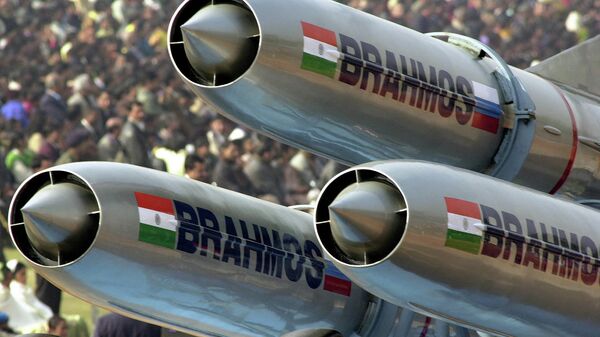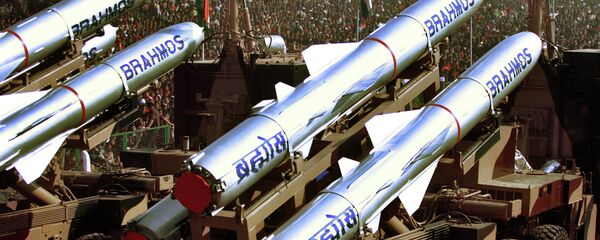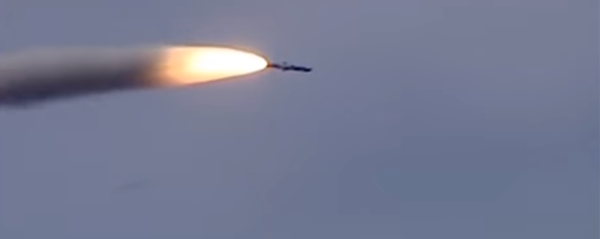Minister of State for Defence Subhash Bhamre told his country’s parliament Friday that the two nations decided to engage in "joint technical development work" in June after India joined the Missile Technology Control Regime (MCTR).
Previously, restrictions within the MCTR treaty prohibited Moscow from providing the necessary systems to New Dehli’s Defence Research and Development Organisation (DRDO) that would allow the missile to expand beyond its current 292 km range.
The deal entails doubling the range of the BrahMos, to 600 km, and was reportedly finalized in October during the 16th Intergovernmental Commission on Military-Technical Cooperation, co-chaired by Russian Defense Minister Gen. Sergei Shoigu and his Indian counterpart Manohar Parrikar. Russian President Vladimir Putin was visiting the western Indian state of Goa at this time as well.
The Economic Times quoted Putin telling Russian journalists about the deal, saying that the two nations, "have also agreed to improve the BrahMos missile, which will be land, air and sea launched. We will also work to increase its range. And we will work together on a fifth-generation aircraft."
In late October, retired Indian Army brigadier and defense analyst Rahul Bhonsle explained, "With 300-kilometers range, the BrahMos had to be deployed relatively closer to the intended area. Now there would be greater flexibility in terms of deployment areas, thereby imparting surprise," according to Defense News.
Manufactured in Hyderabad, southern India, the BrahMos and its variants are configured on the P-800 Oniks anti-ship system (SS-N-26 'Strobile') used by the Russian Navy. New Delhi’s military has been using the cruise missile for almost ten years, and a test firing for the Sukhoi Su-30MKI fighter twinjet is also in the works.
Currently some 65 percent of the BrahMos' elements are supplied by Moscow, including its radar seeker and ramjet engine, and one of the more pertinent issues the two countries are thought to have resolved are the intellectual property rights to BrahMos technologies, with India now being able to export the missile.
Parrikar agreed in June to supply Vietnam with the BrahMos while Indian officials say Malaysia, the Philippines, Indonesia, Argentina, Thailand, Bulgaria, Chile, the United Arab Emirates, South Africa and Brazil have all expressed interest in acquiring the missile.




